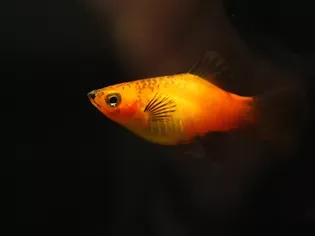Columnaris Disease in Aquarium Fish
Updated on 04/26/24

Columnaris Disease: A Silent Assassin in Your Aquarium
Columnaris disease, also known as saddleback disease, is a bacterial infection that primarily affects the gills and skin of freshwater fish. Caused by the bacterium Flavobacterium columnare, it is highly contagious and can spread rapidly through an aquarium, decimating the fish population.
Recognizing the Signs: A Guide to Early Detection
* White, cottony patches: These patches, particularly around the mouth, gills, and fins, are telltale signs of columnaris.
* Skin erosion: As the infection progresses, the skin around the patches erodes, leaving raw and exposed tissue.
* Gill damage: Columnaris can severely damage the gills, leading to respiratory distress and gasping for air.
* Saddleback lesions: In advanced stages, a characteristic "saddleback" lesion develops on the fish's back, where the scales become raised and discolored.
* Behavioral abnormalities: Infected fish may exhibit lethargy, loss of appetite, and erratic swimming.
Examples of Columnaris in Action: Real-World Scenarios
* Hobbyist's Nightmare: Sarah, an avid aquarium hobbyist, noticed white patches on her goldfish. Despite immediate treatment, the infection spread to the entire tank, wiping out her prized collection.
* Commercial Disaster: A large-scale fish farm suffered a devastating outbreak of columnaris. The infection spread through multiple holding tanks, resulting in significant financial losses.
* Conservation Crisis: In a natural waterway, columnaris decimated a population of endangered trout, threatening their survival.
Understanding the Causes: Identifying Risk Factors
* Stress: Stressed fish are more susceptible to infections, making columnaris more likely to occur in overcrowded or unmaintained tanks.
* Water quality: Poor water quality, such as high ammonia or nitrite levels, weakens the fish's immune system and provides an ideal environment for bacterial growth.
* Injury: Wounds or damage to the skin or gills create entry points for the bacteria to enter the fish's body.
* New additions: Introducing infected fish into an aquarium can spread columnaris to the existing population.
Combating the Threat: Effective Treatment Strategies
* Antibiotics: Antibacterial medications, such as oxytetracycline or erythromycin, are the primary treatment for columnaris.
* Salt dips: Short-term immersion in a salt solution can reduce the bacterial load and promote healing.
* Water quality management: Maintaining optimal water quality, including regular water changes and filtration, is crucial for preventing columnaris outbreaks.
* Quarantine measures: Isolating infected fish from the main tank and practicing strict quarantine procedures can prevent the spread of the disease.
Prevention is Key: Minimizing the Risk of Columnaris
* Maintain a clean aquarium: Regular cleaning, water changes, and gravel vacuuming help remove potential sources of infection.
* Monitor water quality: Test your water regularly for ammonia, nitrite, and pH to ensure a healthy environment.
* Avoid overcrowding: Provide adequate space for your fish to minimize stress and competition for resources.
* Qu检疫新鱼: Before introducing new fish to your aquarium, quarantine them for at least two weeks to monitor for signs of disease.
* Boost fish immunity: A healthy immune system reduces the risk of infections. Feed your fish a balanced diet and consider using immunostimulants.
Columnaris Disease: A Preventable Threat to Aquarium Health
Columnaris disease is a serious threat to freshwater fish, but it can be effectively managed with early detection, appropriate treatment, and preventive measures. By understanding the causes, symptoms, and treatment options, aquarium owners can safeguard their fish from this potentially devastating disease.
Explore More Pets

Freshwater Aquarium Filters
How to Deal With Cloudy Aquarium Water

Saltwater Aquarium Filters
How Do You Remove Chloramines From Tap Water?

Freshwater Aquariums & Habitat
Can I Keep My Koi Fish Inside?

Saltwater Aquariums & Habitat
14 Best Floating Plants for Your Aquarium

Freshwater Fish Health
How to Treat Ich on Freshwater Fish

Saltwater Fish Health
Fin Rot in Aquarium Fish

Freshwater Aquarium Filters
How to Do Aquarium Water Changes

Saltwater Fish Health
How Do Fish Get Parasites?